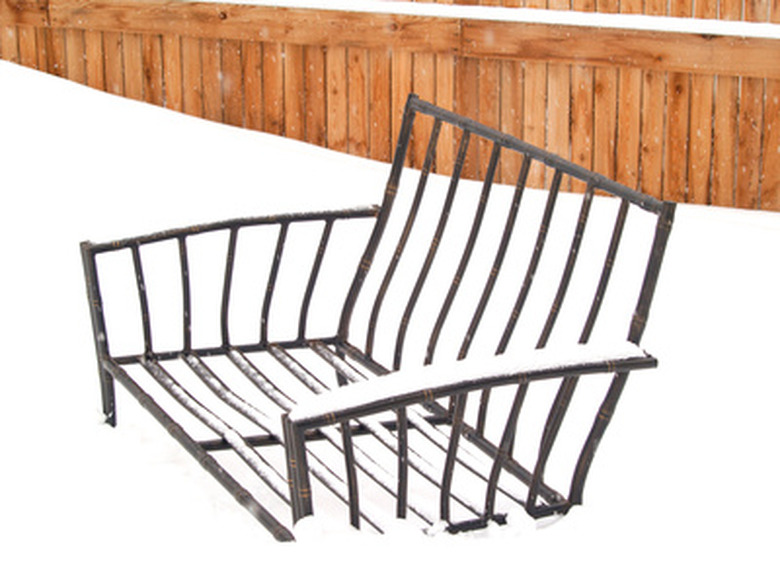What Are Different Types Of Blizzards?
Calm weather in wintertime can be hazardous despite outward appearances, given frigid temperatures and surfaces of ice and snow that can complicate getting around. At the other end of the spectrum, blizzards represent some of the most extreme types of winter storms: maelstroms of gust-whipped snow with visibility-reducing whiteouts and plunging windchills.
Though in everyday speech we often refer to any heavy snowstorm as a "blizzard," the term has a more specific meteorological definition worth understanding – not least to prepare you if you're ever caught in one of these wintertime howlers' paths, often marked by power outages, stranded vehicles and all-around dangerously severe outdoor conditions.
Wind + Snow = Blizzard
Wind + Snow = Blizzard
A continuous dumping of snow is not, by itself, a blizzard, even though it may result in fast-accumulating drifts and cause plenty of travel delays and other headaches. The U.S. National Weather Service uses the term blizzard to describe a snowstorm with winds exceeding 35 miles per hour that are sustained for at least three hours and enough snow to cut visibility to a quarter-mile or less. In other words, gale-force winds are as much an ingredient for blizzards – at least by their technical meteorological definition – as is a lot of snow.
(It's not entirely clear where the word "blizzard" derives from, incidentally. In the 17th and 18th centuries, the term in American English was used to describe strong winds, a major rainstorm and a burst of gunfire. The association between blizzard and winter storms seems to have come about from the U.S. Midwest and/or Great Plains; the Online Etymology Dictionary notes it was in use as such in that region by the 1880s.)
While "blizzard" is a blanket term applying to snowstorms that meet the above criteria at whatever scale, it's possible to roughly categorize a few different types of blizzards based on their origin or setting.
Large-Scale Frontal Blizzards
Large-Scale Frontal Blizzards
A low-pressure weather system in winter months is often the cause of blizzards. Winds spiral counter-clockwise around these extratropical cyclones, with fronts forming where airmasses around the disturbance shove into one another – a process that, by lifting one airmass over another, creates precipitation. Cold air tends to sweep down to the west of these lows, often brewing up snowfall in the process, while the strong airflow across the tight pressure gradients of the low provide the requisite element of strong and prolonged winds.
Fronts sweeping across the North American interior in the winter can result in the epic blizzards the Great Plains and Upper Midwest are known for. Just as notorious a blizzard hotspot is the New England and Mid-Atlantic coast (and adjoining Canada), periodically hammered in the cold months with hurricane-caliber winds and heavy snows by the ocean-brewed extratropical cyclones known as nor'easters. Nor'easters have conjured up some of the most notorious blizzards in American history, including the 1993 Storm of the Century (aka the Great Blizzard of 1993) and the so-called "Snowmageddon" of February 2010.
Ground Blizzards
Ground Blizzards
A blizzard can arise even in the absence of active snowfall, as long as winds are sufficient to blow fallen snow upwards or horizontally. Such an event is known as a ground blizzard, and it may come about in any conditions that generate strong-enough winds over loose-enough snow, including gusty weather behind the passage of a front.
When temperatures plunge behind snowfall and stay below freezing, for example – not allowing the snowpack to stabilize and cement through cycles of melting and refreezing – the fluffy, fresh-fallen snow doesn't consolidate as quickly, so it can be whipped up by even relatively light winds.
Not surprisingly, ground blizzards tend to be most prevalent where there are fewer obstacles to the flow of wind: in prairies rather than heavily wooded areas, for example, and in countryside versus towns, cities and sprawl with their denser and taller buildings.
Though ground blizzards are often of limited extent compared with active precipitation generated along a weather front, they can still wield quite the impact: The National Weather Service categorizes the notorious Children's Blizzard (or Schoolhouse Blizzard) of 1888, which killed more than 200 people in the U.S. Great Plains, as a ground blizzard – one preceded by deceptively pleasant weather.
Mountain Blizzards
Mountain Blizzards
The blizzards created by winter lows are often huge storms affecting large areas. Ground blizzards, by contrast, are often much more localized, and so are blizzards formed up in the mountains. At high elevations, winds are both generally stronger than lower down and also often channeled and strengthened by rugged terrain.
In addition, lofty mountains tend to receive much of their precipitation in the form of snow, given the colder temperatures at altitude. The combination of boosted winds and hearty snowfall makes mountain blizzards commonplace.
In the Pacific Northwest of North America, for example, winter storms bred as extratropical cyclones in the Pacific often march in one after the other, and while they may be bringing only gusty rains to the mild low elevations, the high country of the Coast Mountains, Olympic Mountains and Cascade Range – some of the snowiest mountain masses on Earth – may endure days of blizzard or near-blizzard conditions.
Cite This Article
MLA
Shaw, Ethan. "What Are Different Types Of Blizzards?" sciencing.com, https://www.sciencing.com/different-types-blizzards-7582512/. 22 November 2019.
APA
Shaw, Ethan. (2019, November 22). What Are Different Types Of Blizzards?. sciencing.com. Retrieved from https://www.sciencing.com/different-types-blizzards-7582512/
Chicago
Shaw, Ethan. What Are Different Types Of Blizzards? last modified March 24, 2022. https://www.sciencing.com/different-types-blizzards-7582512/
